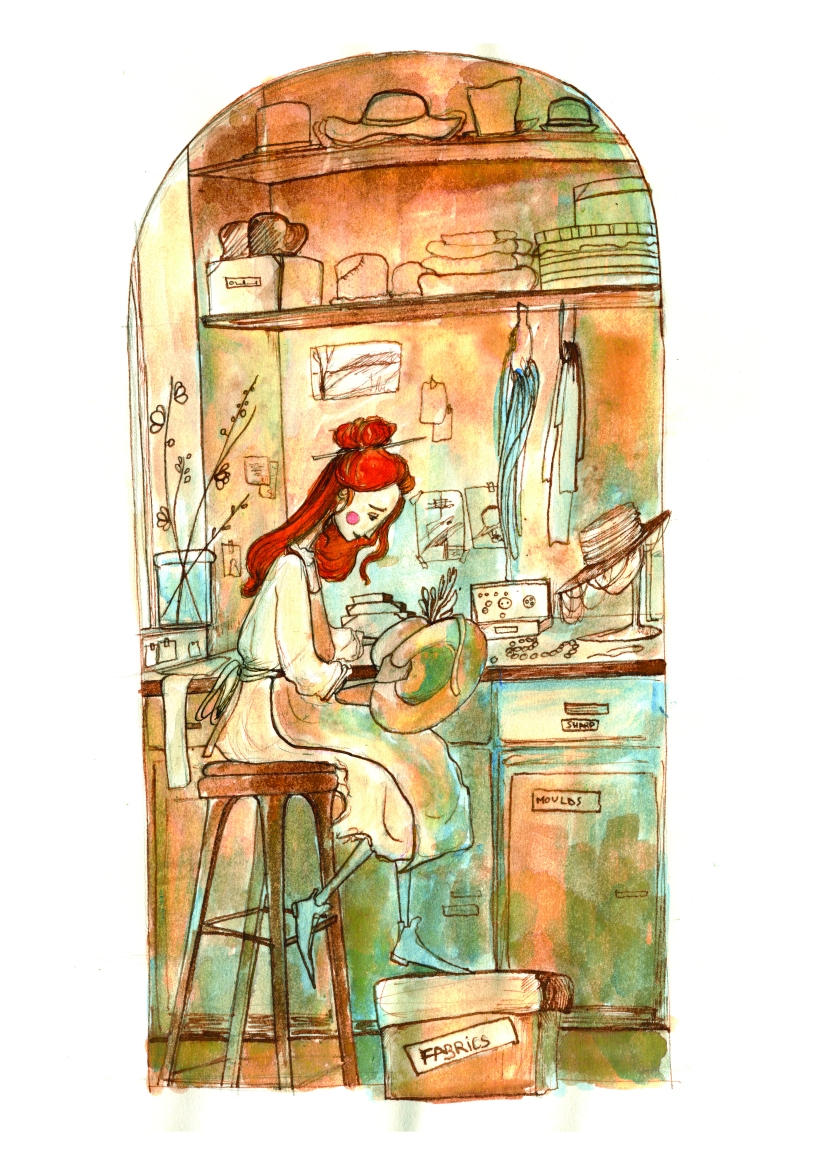
This is the problem: I am an anxious being. More importantly, I am an anxious perfectionist. I don’t know why- it might have something to do with maybe being partially OCD, or trying to control the uncontrollable, or just having the need for that one good thing. All in all, this is who I am.
The thing is, this knowledge does not make my life any easier when illustrating. Because I don’t know if I am being realistic in my self-criticism, or delusional and controlled by the self-deprecating realisation that perfection, by definition, cannot be achieved. So as I look at the illustrations I have done so far for “Howl’s Moving Castle”, part of me wants to say is pleased and happy for some weird reason. Another part, and a bigger one at that, is mortified by this complacency and utter blindness when it comes to the work produced. Surely, there are so many things to be improved. I mean, even looking at the illustration above, I can see where shadows are missing, where more contrast was needed, where I relied too much on the ink itself to cover my own insufficiency. And yet, this image remains my favourite from the series so far. I think it’s because of the emotion I managed to capture on Sophie’s face. I put a bit of me in there. And it sort of lives, I think.
But then there are other, less successful images in my project. There is a scene where Old Sophie sees the castle on the moors for the first time. And it’s meant to be dark, bluish, and menacing. It is supposed to be an awe-inspiring scene. But all I can think of when looking at that illustration is how much I relied on Photoshop to edit on top of my incompetence. I was so afraid of using watercolour on a landscape, that I forgot to feel, and I forgot to play. And I think that is visible there. It’s a bit… amateurish.
There are other illustrations where I can find something to complain about. I feel like I am constantly a few steps back from where I should be, from a technical perspective. I am not good enough. Never. And it’s infuriating.
And then again, there are images which if I were to describe their shortcomings, would make the whole thing sound like nit-picking. There are some illustrations in the project (so far), with which I am actually almost pleased. Almost. I can’t actually be pleased because they are not good enough. And they are not perfect. And if you somehow have a doubt in your mind that I don’t have any logical grounds to sustain the above mentioned opinion, oh, believe you me, I can find plenty of plausible arguments to sustain it. It’s the problem with art. It is so damn subjective, you can see a gem in any pile of rubbish, but you can also nit-pick at a masterpiece. Apart from the greats from Art History (I mean anything before Modernism, of course). We do not touch the greats.
Nevertheless, the strange thing is… I don’t (and I am trying very hard not to) want to nit-pick at “Howl’s Moving Castle”. Yes, there is, as always room for improvement. But considering the fact that I am not good enough, it does kind of work. The images feel like the book to me. It has that weird, kooky atmosphere. It feels…like Diana Wynne Jones’ world. It also has a lot of me in it.
So I can only try to be better in the future…























